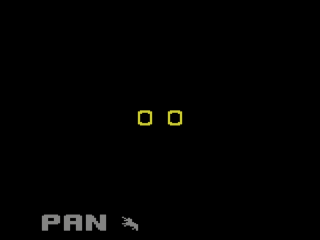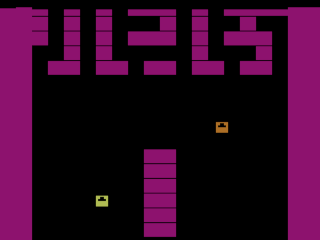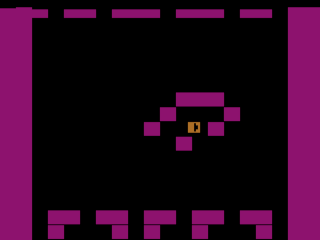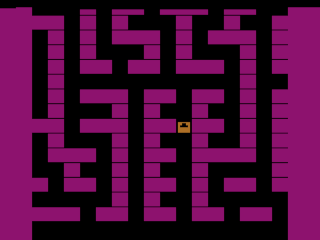|
|
MAZV / MINOTR / Maze02jun82 (8-??-81)
If you're confused by the date (how can a prototype dated 6/2/82
be from August of 1981?) there's a simple explanation: MAZV,
MINOTR, and Maze02jun82 are all actually the same file. MAZV
was the final development version of the original game which was
created in August of 1981. MAZV was then cloned to create a
new development branch called MINOTR in October of 1981 that had
full documentation. MINOTR was then cloned on June 2nd 1982
as Maze02jun82 to serve as another development branch to test a
new timing patch that programmer Dave Hampton had come up
with. This branch was then changed to follow the MINOTR
naming convention (Maze22jun82 became MINOTR1). Got all of
that?
This is the last version of Paul's unreleased maze game (called Maze, Amaze, and Minotaur at different points in development) that was worked on before being abandoned. While the maze generation algorithm and the wall creation/destruction ideas were eventually incorporated into Entombed, many gameplay elements are unique to this prototype.
There are 42 different variations in this demo, each sporting a different type of maze/gameplay combination. There are both one and two player combinations like in Entombed, but here the two players have different abilities. The first player is always positioned in the center of the screen vertically and can only move to the left and right. However they can control which direction the maze scrolls by pushing up and down. The second player can move freely in any direction but cannot control the maze to any extent.
The goal in the one player variations appears to be to
simply move through the maze. There are no zombies to
attack the player and they control the scrolling so they cannot
get pushed off the screen. In the two player variations
the goal is for the first player to touch the second player
(referred to in the documentation as hunter/hunted). When
this happens the game will freeze. Each players speed can
be controlled by the difficultly switches (A is normal speed, B
is fast speed). It's also worth noting that the first
player also cannot scroll the second player off the screen.
As in Entombed, the player can build or destroy walls
with the push of a button, but it works a bit differently in
this demo. Here, depending on the variation, the player
performs only one type of action. There are variations
where the button does nothing, builds, destroys, or does a
'reverse'. Reverse is just a fancy way of saying that if
there's a wall the button destroys it and if there's a space the
button builds a wall. This is how it works in Entombed
(called a Make-Break) but in this demo the player can do each
action an infinite number of times.
The first twenty variations take place in a randomly generated maze, similar to Entombed. Variations twenty one through forty two however take place in what the documentation describes as 'an obstacle course' which basically means the maze now consists of small rectangles and squares instead of long twisting passages. These variations were created by Paul to test the feasibility of using the maze generating algorithm in Towering Inferno.
One final thing worth noting about this prototype is that
each player is a simple square with an arrow that points in the
direction they're facing (so you know which wall you're
interacting with) instead of a stick figure as in Entombed.
 PAN stands for Paul Allen Newell
|
 You can go either up or down in this prototype as
the maze doesn't scroll automatically
|
 Creating a wall |
 Lost in the maze... |
